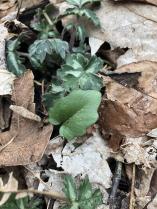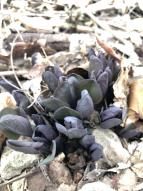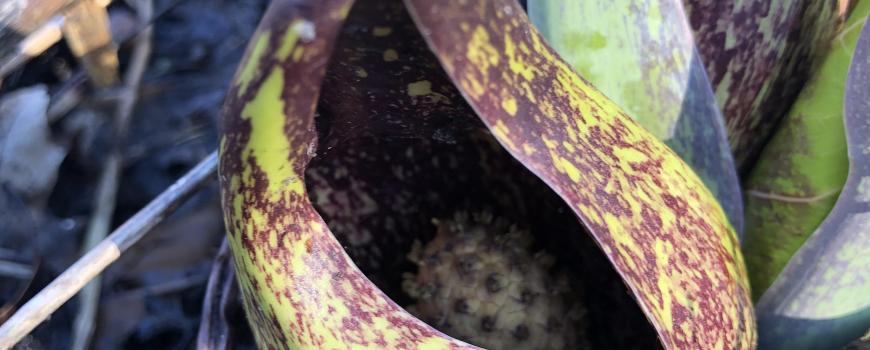Since we're not leading in-person hikes of the Marianist Nature Preserve this spring given the spread of COVID-19, we'll try to make more frequent posts here as the season progresses with observations from our staff.
Wildflower season in Ohio typically kicks off with one of our wierdest-looking species, skunk cabbage. It's been blooming in the wetland in the Marianist Nature Preserve and in wet areas throughout Ohio since February. Its metabolism is so high it can melt snow and ice from around it. That heat helps disperse its name-sake foul scent that attracts flies, which are among the very few pollinators out and about at this time of year.
Our native bees have yet to emerge, although you will see honeybees beginning to gather pollen from early dandelions, dead nettle and other very early plants that often don't capture our full attention. It won't be long, though, until our earliest pollen specialist - Andrena erigeniae - will be seen on spring beauty (Claytonia virginia). Look for small, dark-colored, hairy bees - perhaps with pink pollen packed on to their back legs! And we'll soon see queen bumblebees emerging; several of our bumblebees are ground-nesters and the first order of business for a new queen is to establish a new home. Watch for them flying very low to the ground checking out the local real estate!

We're still waiting on other spring ephemerals and early wildflowers to begin blooming - leaves of spring beauty are up, as are those of marsh marigold, jacob's ladder, and virginia bluebells. Violets and waterleaf are showing new growth. We're keeping a close eye out for bloodroot, purple cress and rue anemone, which herald the true start of the season.
Right now there is ample sunlight on the woodland floor, soil moisture from winter snowmelt is abundant and protected by the "mulch" of last year's leaves, and nutrient levels are at a seasonal peak. These are the rewards for hardy ephemerals who must contend with late frosts, unprotected from the driving wind and rain of spring storms. These jewels of the spring woods evolved to emerge from the ground, set leaves, make a flower (a pretty complicated endeavor), attract pollinators, produce and disperse seeds, and store up as much energy for next year as possible all before the leaves come out on our native shrubs and trees.

Also sending out new leaves (for which we are far less excited) is bush honeysuckle. Early growth, coupled with late senescence, is just one characteristic which gives honeysuckle such a competitive advantage and has allowed it to invade woody habitat in most of the state. This early growth is also a threat to our spring ephemerals, who are shaded out of their long-standing moment in the sun. If you are a landowner, this is a good time to get to know this plant so you can remove it and help protect these wildflowers.
We'll have much more to say about spring wildflowers and the ecology of our woodlands as the season progresses including ant cookies and other cool dispersal mechanisms! If there is a topic you'd like us to cover, or if you have a question for our staff, please let us know at info@meec.center. We hope all of you are able to get outside as much as possible this spring - it's still open for business!




